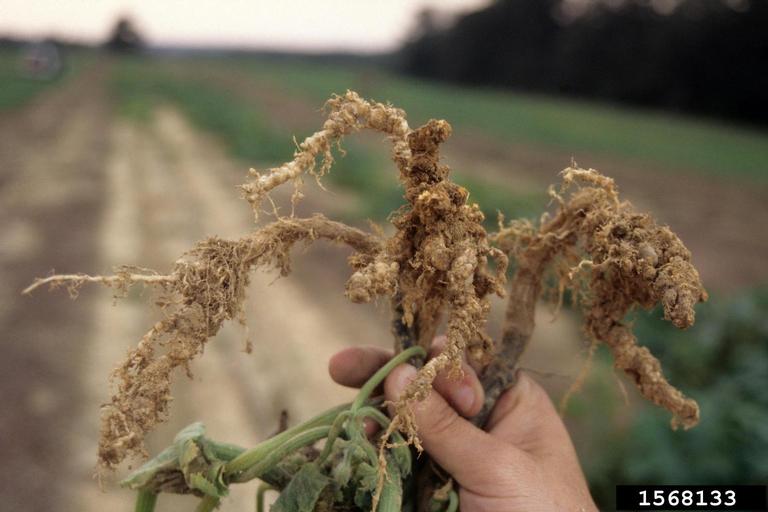
Nematodes
WHAT IT IS AND HOW TO ELIMINATE
Plantas decorativas de jardín y/o interior
Nematodes
Nematodes
Pathogen:
Nematode
Type:
Risk to the plant:
CRITICAL
Nematodos

WHO CAUSES IT?
Plant parasitic nematodes are microscopic, worm-shaped organisms that live mainly in the soil. They belong to the phylum Nematoda and among the most harmful species for plants are Meloidogyne spp., Pratylenchus spp. and Heterodera spp. They begin their development from eggs deposited in the soil or in root tissues. The second stage larvae (J2) emerge from the egg and are the ones that actively infect the roots, penetrating the plant tissue to feed and continue their development. Some species form specialized structures such as nodules or giant cells in the roots, while others migrate freely between the cells. After several molts, they reach the adult stage, where the males generally stop feeding and the females remain inside or on the surface of the roots, laying eggs that are protected by a gelatinous matrix. This process can be repeated several times a year, especially under favorable temperature and humidity conditions, allowing rapid accumulation of harmful populations in the soil.
SYMPTOMS
The disease caused by nematodes affects Plants in their root system, compromising the absorption of water and nutrients, which results in poor growth, lower yield and greater susceptibility to other diseases. The presence of these organisms may go unnoticed at first, but as the population grows, the effects intensify.
- Roots with galls, deformations or thickening
- General decline of the plant without apparent cause
- Chlorosis and yellowing of foliage
- Decreased vegetative development
- Less production of flowers, fruits or seeds
- Irregular appearance of symptoms in the field, forming affected stands
- Root necrosis or rot in combination with other soil pathogens


DEVELOPMENT CONDITIONS
Temperature:
20 °C – 30 °C
Humidity:
60 % – 90 %
HOW IS IT SPREAD?
Contaminated soil, Irrigation water, Agricultural tools, Infected seedlings, Footwear or machinery, Plant material, Wind with soil particles
HOW TO ELIMINATE IT?
Home treatments
Natural allies
There are no natural allies
Chemical treatments
RECOMMENDED PRODUCTS TO ELIMINATE THE PEST
PLANTAS REPELENTES
-
RECOMMENDATIONS
- Rotate crops each season to prevent them from accumulating in the soil.
- Use resistant plants or adapted varieties if available.
- Solarize the soil (cover it with plastic in the sun) before sowing.
- Keep the soil healthy with well-decomposed compost.
- Water with garlic infusion, it is a natural repellent.
- If necessary, apply organic products based on plant extracts or beneficial microorganisms.
- Clean tools well and avoid moving soil from infected areas to healthy areas.














